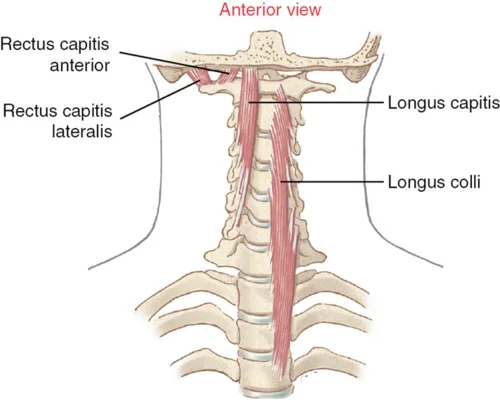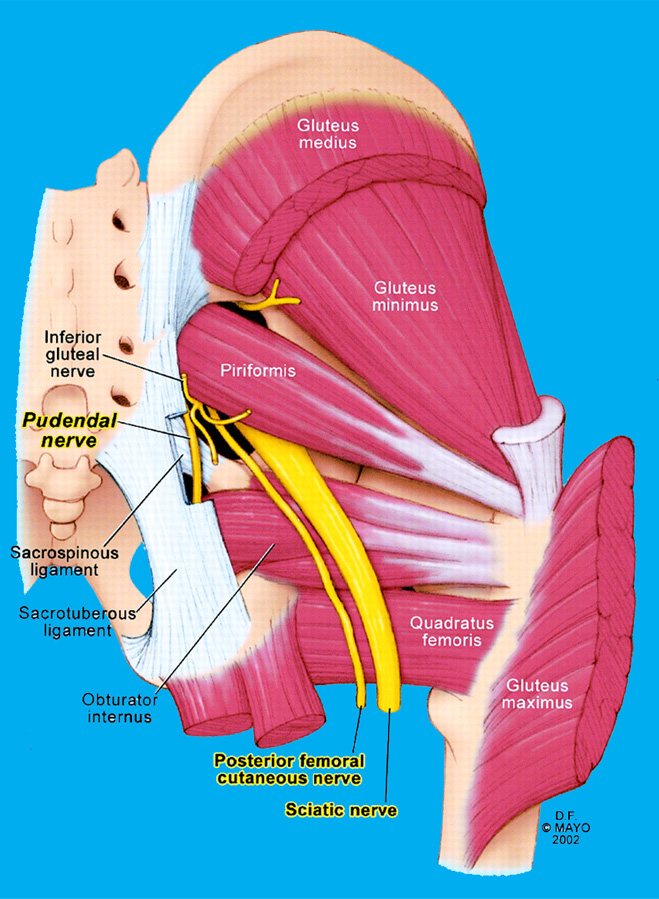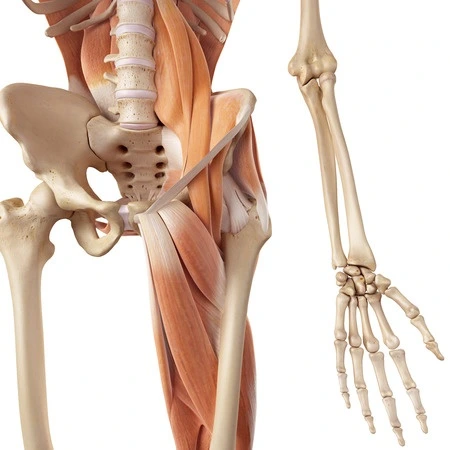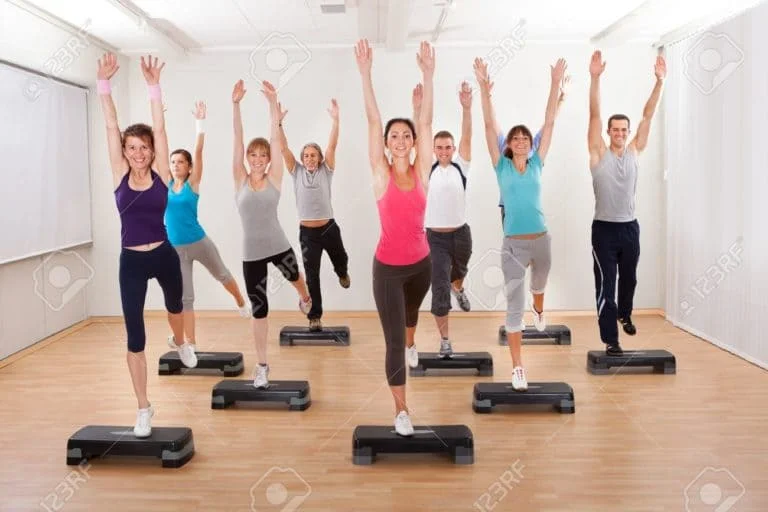Neck muscles stretching exercise
Table of Contents
What is a neck muscle stretching exercise?
- Neck muscle stretching exercises are very common nowadays. Through exercises as well as stretches, the patient can get stronger muscles in the neck as well as gain flexibility. This is good to minimize painful motions & give the stiff neck some rest, but this is also important to keep the neck moving to avoid further stiffening of muscle de-conditioning. The flexible neck can assist the patient to prevent injury to the shoulders, upper back, and arms, as well.
- If the neck is stiff cause of countless hours in front of the computer screen or the forward-bending activity like gardening or even cleaning, you are probably looking for some way to get rid of it.
- Fortunately, there have lots of ways the patient can stretch the neck to decrease pain as well as stiffness, which can be accompanied by muscle spasms, limited flexibility, & headache. Doing neck stretches can give the assistance you to get mobility & the full range of motion. This allows the patient to go about the daily activities with easiness, plus the patient will be more comfortable when he sits or stand for prolonged periods.
- Neck pain is the pain in or around the spine under the head, called a cervical spine. Neck pain is a common symptom of different types of injuries as well as medical conditions. The patient may have axial neck pain located mostly in the neck or even radiating neck pain (pain shoots into other areas namely the shoulders or arms). This can be acute (lasting from days to six weeks) or even chronic (lasting longer than three months to years). Neck pain may affect our activities of daily living & reduce our quality of life if this is not treated properly.
Benefits of the neck stretching exercise
- Flexibility as well as stretching exercises may help to expand or preserve the range of movement & elasticity in the affected cervical (neck) joints, and hence relieve the stiffness that accompanies pain. As a general rule, neck stretching is best to do every day, & some stretches may be done a maximum of times a day.
Different types of the neck stretch
Forward as well as Backward Tilt
How to do this stretching exercise:
- It can be done while the patient is seated or on her feet. Keep the movements smooth & slow.
- To embark on this exercise the head should be squarely over the shoulders & the back should be straight.
- Lower the chin toward the chest as well as hold for 20-30 seconds. Go to the starting position, & slowly elevate the head back up.
- Move the chin up toward the sky & bring the base of the skull toward the back. Hold for ten seconds, then come back to the initial position.
- Repeat this maximum number of times. Do this in your daily activities.
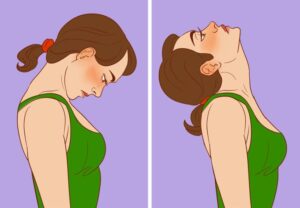
Side Tilt
How to do this stretching exercise:
- This exercise may be performed in the standing position, with the hip-foot width apart & arms down by the sides.
- Smoothly tilt the head toward the left shoulder & try to touch it with the ear.
- Stop when the patient feels the stretch.
- Do not elevate the shoulder.
- Hold the stretch for five-ten seconds, then come back to the embarking position.
- Repeat on the right side. The patient can do several sets & work the way up to ten repetitions.
- To feel more stretch, put the hand on the same side of the tilted head on top of the head, & press lightly with the fingertips.
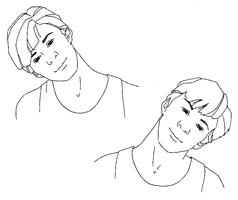
Side Rotation
How to do this stretching exercise:
- The patient may perform it in the sitting or even standing position.
- The head should be squarely over the shoulders & the back should be straight.
- Slowly turn the head to the left until the patient feels the stretch in the side of the shoulder & neck.
- Hold this stretch for thirty seconds, & then slowly move the head forward again.
- Repeat on the right side.
- Do up to ten sets.
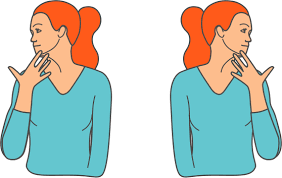
Shoulder Roll
How to do this stretching exercise:
- The patient may perform this in the sitting or even standing position. Move the shoulders straight up & move them in the circle going forward.
- Do this six times. Come back to the starting position, & make another six circles, this time the patient has to go backward.

Neck Flexion (Forward Bending)
How to do this stretching exercise:
- To perform it exercise the patient has to move the neck slowly toward the chest & look downward while only moving the head.
- Once the head has been flexed forward as much as this can comfortably go, hold the stretch for five seconds before coming back to the initial position.
- The neck flexion stretch is felt throughout the posterior part of the neck.

Lateral Neck Flexion (Bending Side to Side)
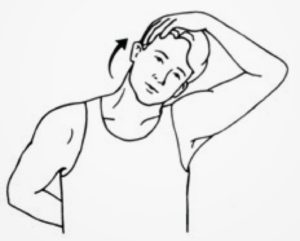
How to do the stretching exercise:
- The patient can perform this in the sitting or even standing position. Slowly flex the head to any one side, namely by bringing the right ear toward the right shoulder.
- During this stretch, the shoulders, & back remain steady while the neck bends laterally to the side.
- Once the head has flexed as much as this can comfortably go to the side, try to hold this stretch for five seconds before returning the head to the starting position. The same stretching is repeated on the left side.
- When the lateral neck flexion is performed with the head bending toward the right shoulder, a stretch is felt along the right side of the neck.
Neck Rotation (Turning Side to Side)

How to do this stretching exercise:
- To do this exercise the back should be straight & shoulders steady, slowly turn the head to the right as much as this can naturally go without increasing pain.
- Once the head has reached its rotation limit, hold the stretch for five seconds before bringing this back to the normal position.
- This same stretching is repeated on the left side.
- These all stretch noted for the stiff neck, rotation is often the most challenging, especially on one side or the other. This is only done with no pain, the patient has to rotate the neck in a comfortable position.
Neck Retraction
How to do this stretching exercise:
- Neck retraction may be performed in the sitting or even standing position. Initiate this exercise by looking straight ahead & allowing yourself to relax.
- The chin may be tucked down slightly & move the head smoothly backward until this is pulled back as much as the patient can without straining or even feeling any pain.
- Continue looking straight ahead, being careful not to tilt the head forward or even backward during this stretch.
- Maintain the position for three to five seconds and then come back to the initial position.
- Repeat the stretch ten to fifteen times.
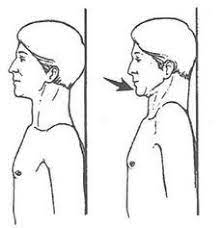
Seated Clasped Neck Stretch
How to do it:
- To perform the exercise the patient has to Sit comfortably on the floor or in a chair, making sure the body is in proper alignment the head should be stacked above the ribs & the pelvis. Hold the hands as well as bring both palms to the back of the head.
- Gently press the hands down toward the ground, tucking the chin into the chest.
- Hold for at least thirty to forty seconds, or 7-8 deep, diaphragmatic breaths in & out.
- Seated clasped neck stretch targets the upper back & trapezius muscle. If the patient feels more stretched then pull with only a single hand in the middle of the head instead of both hands.
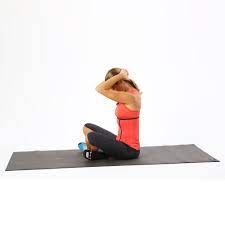
Upper Trapezius Stretch
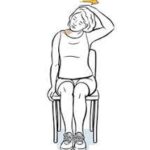
How to do this stretching exercise:
- To do this exercise the patient has to Stand stand or even sit tall, & place the right hand on the lower back, as well as the left hand on the opposite side of the head.
- Move the head toward the shoulder, looking straight ahead, until the patient feels the stretch in one side of the neck.
- Hold for at least 30 seconds (or 5-8 deep, diaphragmatic breaths) and repeat it on both sides.
Bridge
How to do this stretching exercise:
- To do this exercise the patient has to be on the ground, the knees should be flexed, & the feet hip-width apart.
- With the palms & feet pressing firmly into the ground, raise the hips off the floor.
- Hold the hands together below the pelvis, extending through the arms, & contract the core so the lower back is pressed against the floor. Hold for two full diaphragmatic breath cycles (deep breath in, deep breath out).
- The stretch helps increase the flexibility of the paraspinal muscles or the middle back muscles.
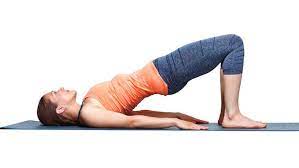
Thread the needle

How to do this stretching exercise:
- To do the exercise start with the quadruped position, all four limbs with the hands under the shoulders & hips over the knees.
- Reach the left arm underneath & across the body with the palm facing up. Flexed the right elbow as you gently lean into the left side; the patient should feel the stretch in the back of the left shoulder.
- Hold for one full diaphragmatic breath cycle (deep inhale in, deep exhale out) in that bottom position, then come back to the starting position & repeat. Continue for at least thirty seconds. Then switch sides.
- This stretch assists to improve the mobility of the thoracic spine.
Banded Pull-Aparts
How to do this stretching exercise:
- To do the banded pull apart the patient has to Stand with the feet hip-width apart. Hold one end of the resistance band in both hands.
- Elevate the extended arms to shoulder height, palms down, with the hands about 6 inches apart. The band may have a small amount of tension, but not be taut.
- Now pull the band apart, extending the arms wide to each side until the upper body is in the T position, the hand should be at the same height. Pause for 2 to 3 seconds when a band is fully extended. Return the arms to the center.
- Continue for at least 30 seconds. It stretch works the muscles in the middle of the back as well as the posterior deltoid.
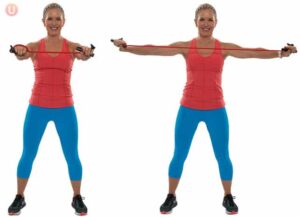
Cat-Cow Pose

How to do this stretching exercise:
- This exercise allows two motions of the neck that is neck flexion as well as extension, which helps to decrease tension in the head, neck, & back. This also helps to increase body awareness & good posture.
- Start this with all four limbs in the tabletop position.
- Breathe in to expand the stomach as this lowers toward the floor.
- Look upward, lift the chin, as well as allow the head to tilt posterior slightly.
- Breathe out, tuck the chin towards the chest, & round the trunk toward the sky.
- Hold for a second here, then allow the head to hang down.
- Move the head to any comfortable position to reduce tension.
- From here, move between the lower & upper positions in the chosen space.
- Allow the breath to guide the motion.
- Do this for at least one minute.
Sphinx Pose
How to do this stretching exercise:
- The sphinx pose strengthens & stretches the spine, which assists to promote good posture.
- This also helps to correct symptoms of computer or text neck. To do this stretch the patient has to Lie on the tummy with the elbows directly put under the shoulders.
- Straighten the forearms in front with the palms facing down.
- Contract the lower back muscles, glutes, as well as thighs to raise the chest & head.
- Look straight ahead or even slightly up toward the sky. Hold the position for up to 50 to 60 seconds.
- Repeat this one to three times.
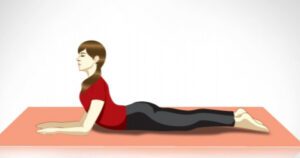
Bed hangs
How to do this stretching exercise:
- Bed hangs help to increase circulation, alleviate tension, & correct imbalances from repeatedly looking or bending forward.
- To do this exercise the patient has to Lie on the mat with the shoulders near the edge.
- Gently hang the head back over the edge of a bed.
- Put the hands overhead or alongside the body.
- Hold the position for up to sixty seconds.
- Gently turn the head back onto a bed & relax in this position.
- Repeat 1 to 2 times.
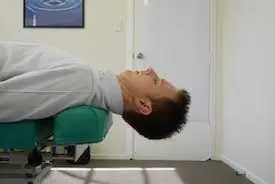
Standing forward bend
How to do this stretching exercise:
- This pose allows the patient to release tension in the head, neck, & back. The patient will also loosen up the spine as well as the legs. To deepen this stretch, flexed the knees & put the palms facing the roofs underneath the feet.
- To do this stretch the patient has to Stand with the feet hip-distance apart or even slightly more.
- Hinge from the hips to lower the trunk toward the legs.
- Flexed the knees to a comfortable degree.
- Put your hands on the legs or the floor.
- Move the chin toward the chest & let the head hang heavy.
- Move the head in any comfortable direction.
- Hold this stretch for fifty seconds.
- Put the hands on the thighs to press yourself up into the starting position.

FAQ
In most cases, daily neck stretches & exercises are recommended to improve posture & reduce the risk of neck pain returning or becoming worse. When performed multiple times throughout the day, the following easy stretches and exercises for the neck may bring even more relief.
When we experience high levels of anxiety or stress, our body’s natural reaction is to tense up. When this happens consistently over a long period of time, it can lead to muscle tension. This can cause stiffness, tightness, aching, & pain in the neck and shoulders.
When the muscle overexerts or stretches too far, small tears may form in the muscle, tendon, or connective tissue between the muscle & tendon, which is usually the weakest part. More extensive neck strains involve more inflammation, which leads to more swelling, pain, and a longer recovery period.
Neck tension refers to neck pain that develops when the muscles in the neck cannot relax, which can lead to soreness, muscle spasms, and headaches. It has numerous possible causes, ranging from joint problems to inflamed nerves
A stiff neck often occurs when one of the muscles becomes strained or tense. Stiffness can also develop if one or more of the vertebrae is injured. A stiff neck may become painful when a person tries to move their neck or head. Usually, a stiff neck results from a minor injury or incident.

